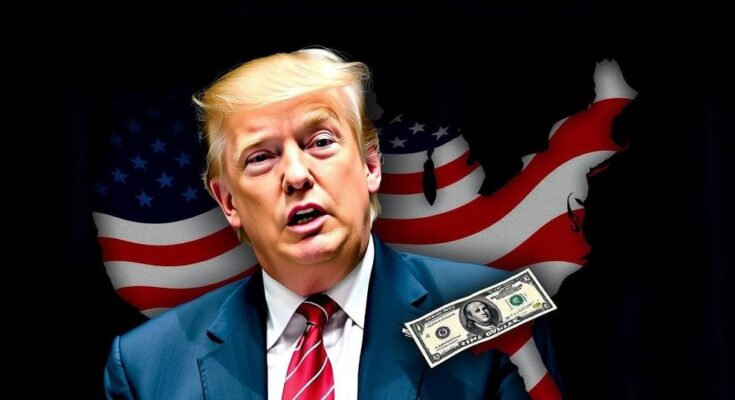Donald Trump’s election has led to a strengthening of the US dollar, but his economic policies, including potential tariffs and increased national debt, could hasten the decline of dollar dominance in global trade. There is a growing conversation about alternative currencies among BRICS nations, which could disrupt the current reliance on the US dollar and impact international financing mechanisms.
Donald Trump’s recent election has led to a notable strengthening of the US dollar. Following his victory, the dollar reached a one-year high, buoyed by expectations of potential tariffs on imports, particularly directed towards the BRICS nations. Such measures could disrupt global trade dynamics and challenge the dollar’s longstanding dominant status.
The phenomenon of dollarisation globally manifests in various forms, from countries using the US dollar as their official currency to its role as a reserve and vehicle currency that facilitates international trade. For instance, when conducting trade between Chile and Malaysia, parties often prefer to transact in US dollars due to the lack of liquidity in their respective currencies. Currently, the dollar accounts for over 50% of foreign trade invoicing and more than 80% of foreign exchange transactions, underscoring its pivotal role in the global economy.
However, Trump’s “America First” policies may inadvertently undermine this dominance. A robust dollar, while beneficial for the US in maintaining high demand and cheaper borrowing via US Treasuries, also raises the costs of dollar-denominated commodities. This development could weaken the US’s export capabilities and have adverse effects on the domestic economy.
Furthermore, the notion of transitioning to a multi-currency system has been gaining attention, particularly with discussions around alternative reserve currencies within BRICS nations. Trump’s policies, if geared towards further fiscal growth, might amplify US debt, subsequently diminishing global confidence in US dollar reserves. Reports suggest that his administration could increase national debt by as much as $15 trillion over a decade, prompting countries to consider alternatives to US Treasuries.
In addition, Trump’s tariff initiatives, intended to bolster local producers by making imports more costly, may strengthen the dollar further, leading to an environment where countries seek alternatives to dollar transactions. Should there be a collective move among nations to reduce their US dollar dependency, it could undermine the currency’s standing, potentially escalating costs for the US and threatening trade stability globally.
In conclusion, while the US dollar will likely maintain its status as a global currency, the implications of Trump’s economic policies may lead to a recalibration of its dominance. Movement towards a multi-currency system could be expedited, prompting nations to reassess their holdings in US dollars and Treasuries, thereby sparking significant shifts in the international monetary landscape.
The article discusses the potential implications of Donald Trump’s election on the global dominance of the US dollar, highlighting both the short-term strengthening of the dollar and the long-term vulnerabilities posed by Trump’s economic policies. It explores the concept of dollarisation, illustrating its critical role in facilitating international trade through examples of transactions between countries that rely heavily on the US dollar. The article addresses the potential risks associated with Trump’s protectionist policies and their effect on global trade dynamics, as well as the emerging discussions around alternative currencies.
In summary, Donald Trump’s election and subsequent policies could have profound effects on the global standing of the US dollar, promoting discussions about alternative currencies and a potential decrease in demand for dollar reserves. These shifts may not only influence the cost of domestic and international trade but also initiate significant transformations in the global economic framework. While the dollar is unlikely to disappear from use, its exclusivity could be challenged in the face of evolving geopolitical and economic landscapes.
Original Source: theconversation.com




